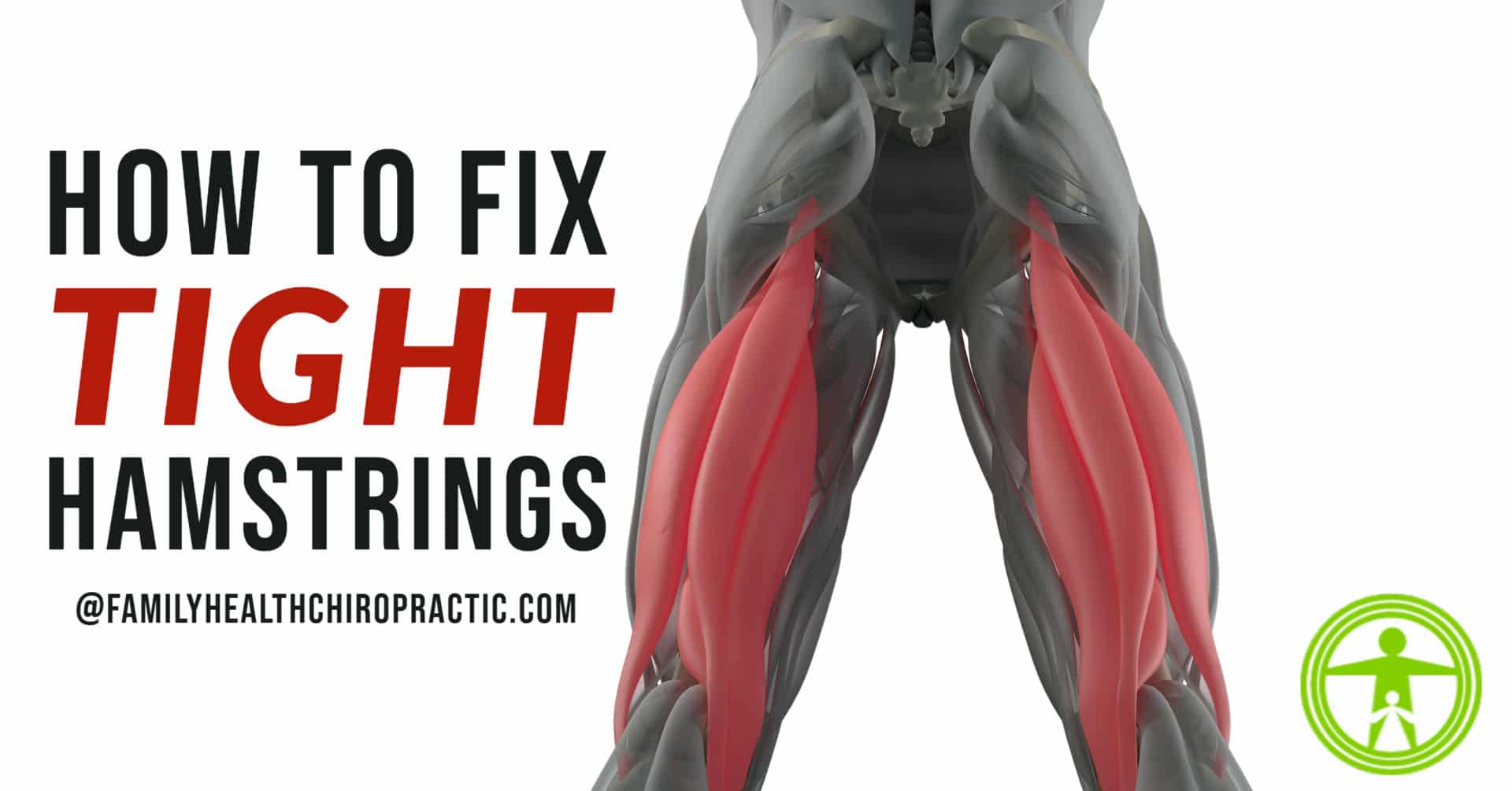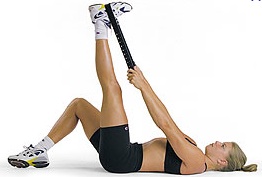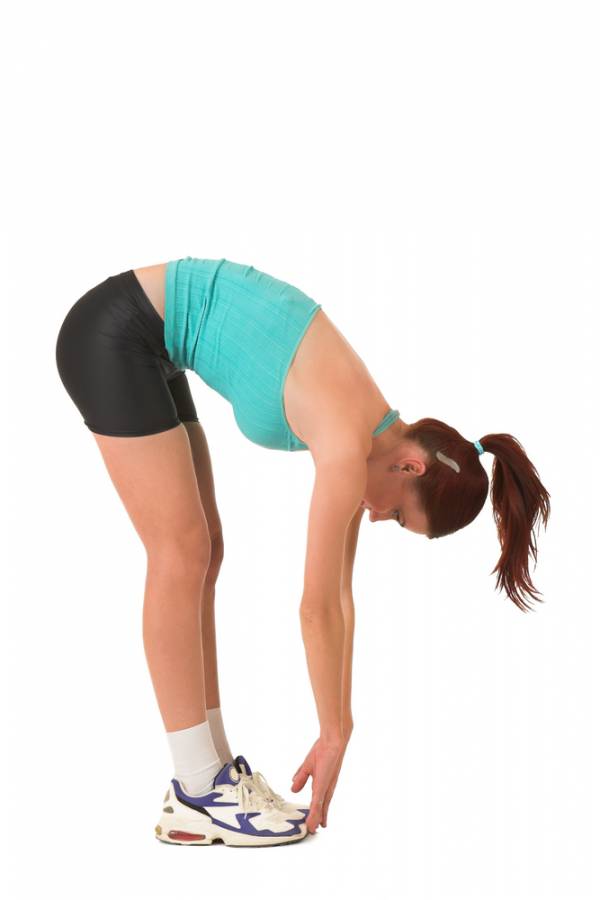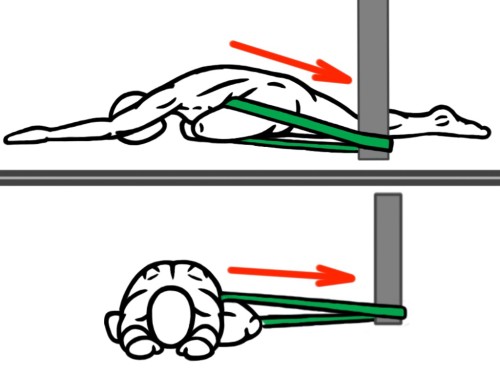Do you have tight hamstrings?
Stand with your feet together. Keep your knees locked. Slowly bend forward and touch your toes.
Can you touch them? If not, then your hamstrings might be too tight… but that doesn't meant they need to be stretched!
Most people tend to think when they can't touch their toes, their hamstrings are tight.
But just because your hamstrings are tight doesn't mean they need to be stretched more.
Tight hamstrings could be a symptom of something greater.
A lot of people complain to me about tight hamstrings, and the usual exercises prescribed by physical therapists and strength coaches always include a variety of hamstring stretches.
Yes, there are times when these stretches are necessary, but there are also many times when they simply aren’t.
Neurological Tightness vs. Mechanical Tightness
Before we get into it; let's first go over the difference between mechanical and neurological tightness:
Mechanical tightness occurs when a muscle is shortened, which is most often caused by poor posture, movement and sitting all day on your poor workstation chair.
Neurological tightness, on the other hand, occurs when a muscle is lengthened.
Make note, while we may perceive that a tissue is tight (short) it may not actually be tight.
Women who have been pregnant before can completely understand this feeling. In other words, as their body begins to stretch out (the tissues literally lengthen) they feel tight.
What happens in the case of neurological tightness is that because the muscles are lengthened they receive additional neural input, thought to be a protective response.
Essentially, the body is trying to prevent the muscle from being stretched too far, so you experience the sense that the muscle is tight.
The best way to think of neurological tightness is to grab a rubber band and stretch it. Stretch it as far as you can and the band itself becomes tight.
This is exactly what happens to the muscles in our body. Now take that stretched rubber band and shoot it at someone who's sitting with poor posture and yet complaining about their “tightness”.
Moving on… the problem of tight hamstrings could be due to a number of different factors.
While neurological failure is very common, mechanical problems can be identified quickly.
If your hip flexors are tight, the pelvis tilts forward.
Because our hamstrings are attached to the back of the pelvis, this tilting will cause the hamstrings to be maintained in a lengthened position and then whammo; tight hamstrings.
This means that instead of stretching, you should actually be working on strengthening (think standing squats and standing all day rather than sitting) so they can counteract the forward pelvic tilt position.
Another common problem with “tight hamstrings” is that you are simply not moving properly or your muscles are not firing properly.
In this situation, muscles aren’t activating and firing at the appropriate time, causing your hamstring to do much of the work other muscles are supposed to do.
For example, when extending the hip, your glutes should fire first, followed by the secondary hamstrings.
For many people, the glutes don’t fire properly (in some cases barely at all) and the hamstrings take over the main job of extending the hip.
But the hamstrings weren’t designed to be the primary mover here, and they will therefore have to be contracted for longer – giving you the feeling of tightness.
How to Fix Tight Hamstrings Caused by Neurological Tightness
First, is your spine properly aligned? If not, then you have neurological problems that are central (from the spinal cord) and no amount of mobility, flexibility or stability training is going to correct it.
Second, perform the active isolated hamstring stretch. While this exercise does stretch the hamstrings to some degree, it's main goal is to train proper sequencing and muscle patterns of your butt.
Active Isolated Hamstring Stretch
- To do this exercise, you lie on the ground with a rope over one foot.
- Squeeze your glutes, followed by your quads, and then actively lift up your leg as high as it can go.
- When the leg won’t go any further, you can give a gentle pull with the rope, and hold for only about one second.
- Repeat this for about 8-10 reps.
How to Fix Tight Hamstrings due to Mechanical Tightness
Let’s move on to the second potential situation, where your hamstrings may be shortened.
If this is the case – go ahead and stretch your hamstrings.
But remember, until you rectify the root cause for them being tight, you are going to be chasing a never-ending problem.
Let's try to figure out the root problem.
The Standing Toe Touch
The standing toe touch is considered by many sports professionals as one of the foundational and fundamental patterns of movement.
There's actually quite a bit of science behind it and it's all really just a fancy way to say that everything is connected, and everything matters when we talk about the human body.
That said, by analyzing how we move, we are able to determine if our problem is one of mobility or stability.
Stability – The ability to resist movement in a joint from an outside force
Mobility – The ability to move a joint through it's full anatomical and available range of motion
When a hip is locked down due to decreased mobility (poor range of motion), hinging at the hip joint becomes difficult.
Failure to properly hinge at the hip joint causes problems!
The body basically puts the brakes on movement and takes the path of least resistance, demanding more work from the lower back.
Over and over, this process is what eventually leads to lower back pain and injuries.
So how can you determine which hip is involved? Maybe it's both?
To find the answer, break out the hips one at a time in the standing toe touch test:
- Put your feet together.
- Stand with your knees locked.
- Slowly bend forward and try to touch your toes with your hands.
Results:
- You can touch your toes. That is what we want.
- You can’t touch your toes. Now we need to figure out whether the problem is with hip mobility and/or pelvis mobility, or a matter of stability restriction.
Standing Assessment
Simply begin from a standing position.
- Put your feet together.
- Shift your weight to the left leg, keeping it straight. Unlock your knee on the right side and go on the ball of your foot. All the weight should be on your left leg.
- Stack your hands on top of one another.
- Slowly bend forward, aiming towards your left toes. Note how far you go.
- Now switch positions. Shift your weight to the right.
- The right leg goes straight with knee locked.
- Bend the left knee and go on the ball of your left foot. Slowly bend forward and aim towards the right foot.
How did it feel? Did you go further on one side than the other?
If the range of motion is less on one side, you probably have a funky hip that needs some lovin.
I know one of the best austin chiropractors if you're in to it :)
However, if you have the same range of motion on both sides, then both hips and/or the lower back may be involved and you're pretty much screwed. LOL, just kidding.
But seriously, how long are you gonna let this be a problem?
Seated Assessment
Now let's get down and dirty on the ground to see if range of motion changes when you're sitting.
- Sit down on the ground with legs in front, knees and feet together.
- Slowly bend forward to touch your toes. Do you get further?
Is Mobility a Restriction?
If you stay the same, you may have a mobility issue in the lower back/pelvis/hips or tissue tightening on the hamstrings.
Mobility restrictions will remain no matter what position you get into.
Without proper hip hinge mobility, you will over use the lower back and be more prone to injury.
Reduced hip hinge results in less involvement of the powerhouse gluteus maximus muscle.
This means you need to work your butt off (literally RAM your ass) for your mobility restrictions.
RAM stands for release, activate, and mobilize.
Butt Release:
The hip and buttock region with foam rolling.
The hip joint with an elastic band while performing pigeon pose.
Activate:
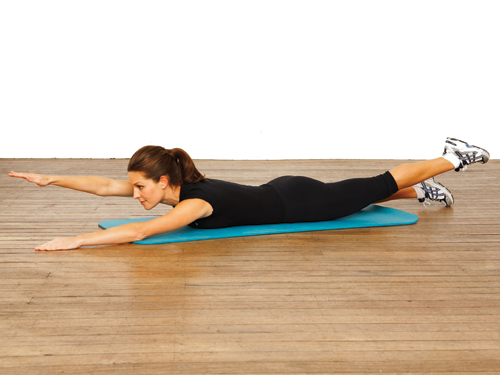
Mobilize:
Stand up and walk.
After the reset, repeat the toe touch test and see if anything has changed.
Do you have Stability Problems?
If you were able to get further, this indicates an underlying stability dysfunction.
Remember, the nervous system controls everything.
This is why spinal care is so vital to health; especially movement.
When you sit on the ground, your body is momentarily more stable because the nervous system is not having to work at holding you upright.
This allows more movement because it comes from a safer position.
Poor stability (motor control) means decreased timing and rhythm in your movements.
Activate:
Activate your hip and back muscles with lower-cross body patterning on the ground.
This can include exercises like dead bug or bridges.
Do four repetitions total, two on each side. Go slowly, with mindful movement and controlled concentric and eccentric motion. Completely relax after each repetition.
Mobilize: Stand up and walk.
After the reset, repeat the toe touch test and see if anything has changed.
In Summary
Before you spend hours per week stretching your hamstrings, get a quick assessment and find out if in fact you should be stretching – or if you need to be working on something entirely different.
If your spinal column is out of whack, then I guarantee you have central and peripheral neurological problems causing bad programming for muscles, ligaments and tendons.
Failure to correct this root cause, will always leave you short. No pun intended.

